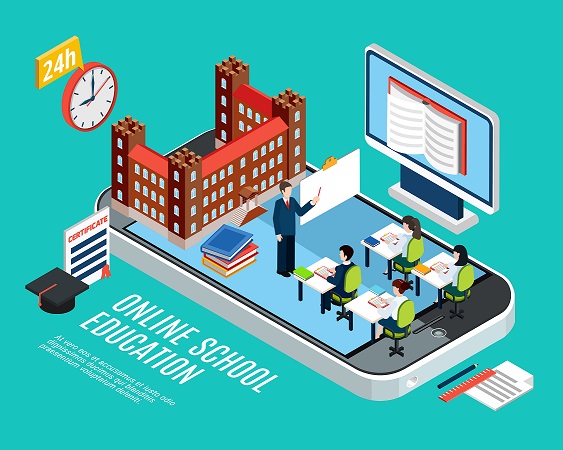The world of education is continuously evolving, and technology plays a pivotal role in this transformation. Educational institutions, from schools to universities, are harnessing the power of innovative systems to enhance their administrative processes and improve student engagement. Two such systems, Student Information Management and Online Attendance, are making significant strides in optimizing educational operations. In this blog, we explore the importance and impact of these systems on the contemporary educational landscape.
Part I: Streamlining Education with Student Information Management
1. Centralized Data Management
Student Information Management System are designed to centralize data related to students, making it easier for educational institutions to access, manage, and update essential information. These systems create a single source of truth, reducing data redundancy and errors.
Centralized data management offers several benefits:
Efficiency: Educational institutions can efficiently store and retrieve student records, course schedules, and academic progress.
Data Security: Data security is paramount, and SIM systems provide robust security measures to safeguard sensitive information.
Accessibility: Authorized staff can access student data as needed, which streamlines administrative processes.
Analytics: These systems often include analytics tools, enabling institutions to derive insights from student data to improve decision-making.
2. Enhanced Communication
Effective communication is crucial in the education sector. SIM systems facilitate improved communication between students, teachers, and administrative staff. Features such as student portals and messaging systems allow for direct interaction.
Enhanced communication features include:
Student Portals: These portals enable students to access their academic records, class schedules, and course materials.
Parent Access: Parents can stay updated on their child’s progress, ensuring a collaborative approach to education.
Real-Time Updates: Updates and notifications regarding grades, attendance, and school events can be delivered in real-time.
Staff Collaboration: Faculty and administrative staff can easily collaborate and share information about student progress.
3. Academic Planning and Tracking
SIM systems aid in academic planning and tracking. Educational institutions can efficiently manage course registrations, track academic progress, and plan for future offerings.
Key academic planning features include:
Course Registration: Students can register for courses online, streamlining the enrollment process.
Transcript Management: Institutions can generate and share transcripts electronically, simplifying record-keeping and student transfers.
Degree Audits: Students and academic advisors can perform degree audits to track progress toward graduation requirements.
Scheduling Tools: Institutions can create class schedules and allocate resources more effectively.
Part II: The Role of Online Attendance Systems
1. Real-Time Monitoring
Online attendance systems offer real-time monitoring of student attendance. Professors and administrators can quickly identify students who are missing classes and take necessary actions to offer support.
Real-time monitoring advantages include:
Early Intervention: Early identification of students with poor attendance enables timely intervention, improving their chances of academic success.
Increased Accountability: Knowing that their attendance is monitored, students are more likely to attend classes regularly.
Efficient Record-Keeping: Attendance records are digitally stored, reducing the risk of errors and making record-keeping more efficient.
2. Automation and Reporting
Online attendance systems automate routine administrative tasks related to attendance tracking. These systems generate reports, analyze attendance data, and provide valuable insights to educators and administrators.
Automation and reporting features consist of:
Automated Marking: Professors can mark attendance digitally, saving time and reducing manual effort.
Data Analysis: Institutions can analyze attendance data to identify trends, helping them allocate resources more effectively.
Custom Reporting: Customizable reports provide tailored insights for educators and administrators.
3. Enhanced Communication
Online attendance systems facilitate better communication between students and educators. Professors can communicate with students who have poor attendance more effectively, helping them understand the importance of regular attendance and its impact on their academic performance.
Enhanced communication benefits include:
Attendance Notifications: Automated notifications can be sent to students about their attendance status.
Support and Feedback: Professors can reach out to students to offer support and discuss any issues that might be affecting attendance.
Improved Student Engagement: Enhanced communication fosters a more engaged and supportive learning environment.
Part III: The Future of Education
The integration of Student Information Management and Online Attendance Systems heralds a promising future for education. Several trends are shaping the evolution of these systems:
1. Artificial Intelligence and Predictive Analytics
Artificial intelligence (AI) and predictive analytics will play a substantial role in education. These technologies will be used to predict student attendance patterns and identify potential dropouts, allowing institutions to provide proactive support.
AI and predictive analytics are expected to:
Enhance Student Success: Predictive analytics can identify students at risk of dropping out and enable early intervention.
Personalized Learning: AI can personalize learning paths for students, offering additional resources or support based on their unique needs.
2. Mobile Accessibility
Mobile accessibility will become more critical. With the prevalence of smartphones and tablets, student information management and online attendance systems must be optimized for mobile use.
Mobile accessibility advantages include:
Greater Accessibility: Students and faculty can access the systems from anywhere, improving convenience and engagement.
Improved Communication: Mobile apps make it easier for students and faculty to stay connected and informed.
3. Integration with Learning Management Systems (LMS)
These systems will become more tightly integrated with learning management systems, creating a seamless experience for both administrative and academic needs.
Integration with LMS will:
Streamline Operations: Data and insights from SIM and attendance systems will be seamlessly integrated with the learning environment.
Enhance Collaboration: Faculty and administrative staff can collaborate more effectively to support student success.
4. Enhanced Security
As educational institutions rely more on digital systems, security will be a top priority. Institutions will invest in robust security measures to protect sensitive student data, ensuring the privacy and integrity of student records.
Conclusion,
Student Information Management and Online Attendance Systems have revolutionized education administration and improved student engagement. As technology continues to advance, these systems will evolve, providing more efficient and personalized experiences for both students and educators. With the implementation of AI, mobile accessibility, and integration with LMS, the future of education is bright and promising, ensuring that institutions can continue to adapt to the changing landscape of learning.





